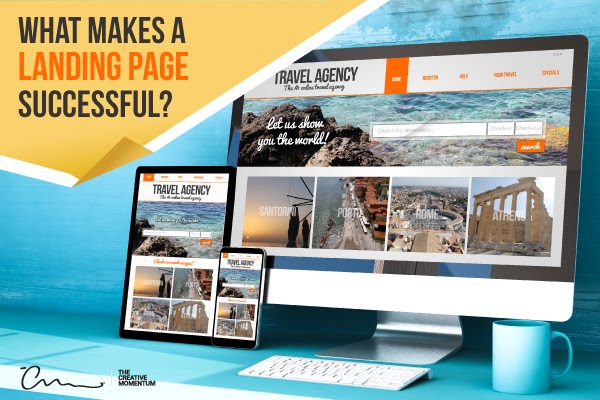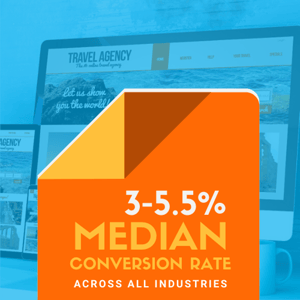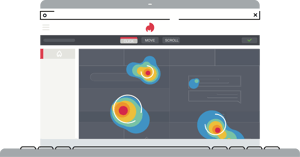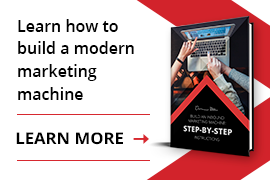
It’s the million dollar question: what makes or breaks a landing page?
In the past, we’ve reviewed tips for how to create the perfect landing page as well as best practices for PPC landing pages. But here, we’d like to take a step back and examine the role of a landing page in your marketing funnel (while also providing a few best practices for landing page creation and some optimization tips you can take home to your own site).
Start with the Data
Start with an assessment of each of your landing pages and review a few key metrics:
- Dwell Time – how long users spend on the page, a rough gauge of user interest in the subject matter
- Bounce Rate – the number of single page sessions divided by the total number of sessions
- Conversion Rate – the percentage of users who take the desired action on your website
Each of these metrics offer insight into what you’re doing right—and wrong—with your landing page design. For example:
- Low dwell time = indicates a problem with page targeting and SEO, too many unqualified viewers find themselves on the page and leave.
- High bounce rates = a disconnect in your marketing materials. Viewers are expecting one thing and then bounce when those expectations aren’t met.
Of course, as most of us know, your conversion rate is the metric most indicative of success. It’s a little harder to drill down to the root cause of a low conversion rate, as it’s often the result of many smaller issues working against you.According to research, the median conversion rate for landing pages across all industries is between 3-5.5%.
Make sure to review your landing page data before you make changes so that you have a benchmark for monitoring performance over time. Ideally, you’ll need to make these changes to just one or two of your landing pages to find what works.
Best Practices for Landing Pages
 Landing page optimization is always a trial and error process, but there are a few best practices. Whether you craft a landing page from scratch or optimize an old one, start with these questions.
Landing page optimization is always a trial and error process, but there are a few best practices. Whether you craft a landing page from scratch or optimize an old one, start with these questions.
- Is your page relevant to your target market?
- Is your conversion goal clear, direct, and easy to understand at a glance?
- Does the layout feature punchy text above the fold with some type of eye-catching imagery?
- Are there distractions (for example, multiple content offers) on the page that take away from the primary message?
As a rule, simple is better with landing pages. Companies get so caught up in the minutiae that they neglect this—for example, worrying about whether CTA buttons should be blue or green when in fact what the company really needs is to clarify their value proposition.
And while you’re at it, pay attention to the language you use in your landing pages. This is one area where your copy must be customer-focused. In other words, you need to make the customer the hero of the story.
Don’t talk about how smart your brand is for coming up with this solution, and don’t talk about the features of the product itself. Paint a picture for viewers that describes how this solution will fit into their lives – and then make it clear which simple and specific steps they should take to make it happen. For example, rideshare company Uber, for all of its faults, nails this simplicity with its rider signup landing page.
Landing Page Optimization Tweaks
The above is a good framework for getting a landing page up and running, but once it’s live, you’ll need to tighten a few screws. We recommend that you look at the following areas in particular.
Get specific with your CTA
Remember our rule about being clear and direct? This applies to your CTA button. Many choose vague statements like “start now,” but what does that mean to a prospect? Start what now?
Instead, tie the call directly to the action: “Download your free PDF,” “request a virtual consultation,” and so on. The less work your viewers have to do to understand your offer, the more likely it is they’ll play along.
Create custom photos
An easy way to clarify your message and boost the power of your landing page is to make in-house imagery to support your content offers.
For example, web analytics company Hotjar supplements its “try it free” signup page with a graphic showing a cartoon heat map of a website. Though simple, this image grabs our attention and shows us what Hotjar can do. This type of visual reinforcement goes a long way in assisting conversions. If you still use stock photos to support your landing pages, this is an easy improvement to make.
Proofread your pages
The devil is in the details when it comes to landing pages, and it doesn’t take much to turn an interested prospect away. This is particularly true for spelling and grammar. Ask several people with “fresh eyes” to proofread your landing page.
In one poll, 74% of respondents noticed the quality of spelling and grammar on a website – and 59% agree that obvious spelling mistakes would stop them from buying from the company.
It’s a small issue, but a typo in the wrong place can tank your conversion rates. Lucky for you the solution is simple: double check everything before you publish.
Build the Perfect Landing Page
As the “gatekeepers” of your marketing funnel, your company’s success relies on landing page success. And while that might look different for every company, the above tips will set you on the right path.



